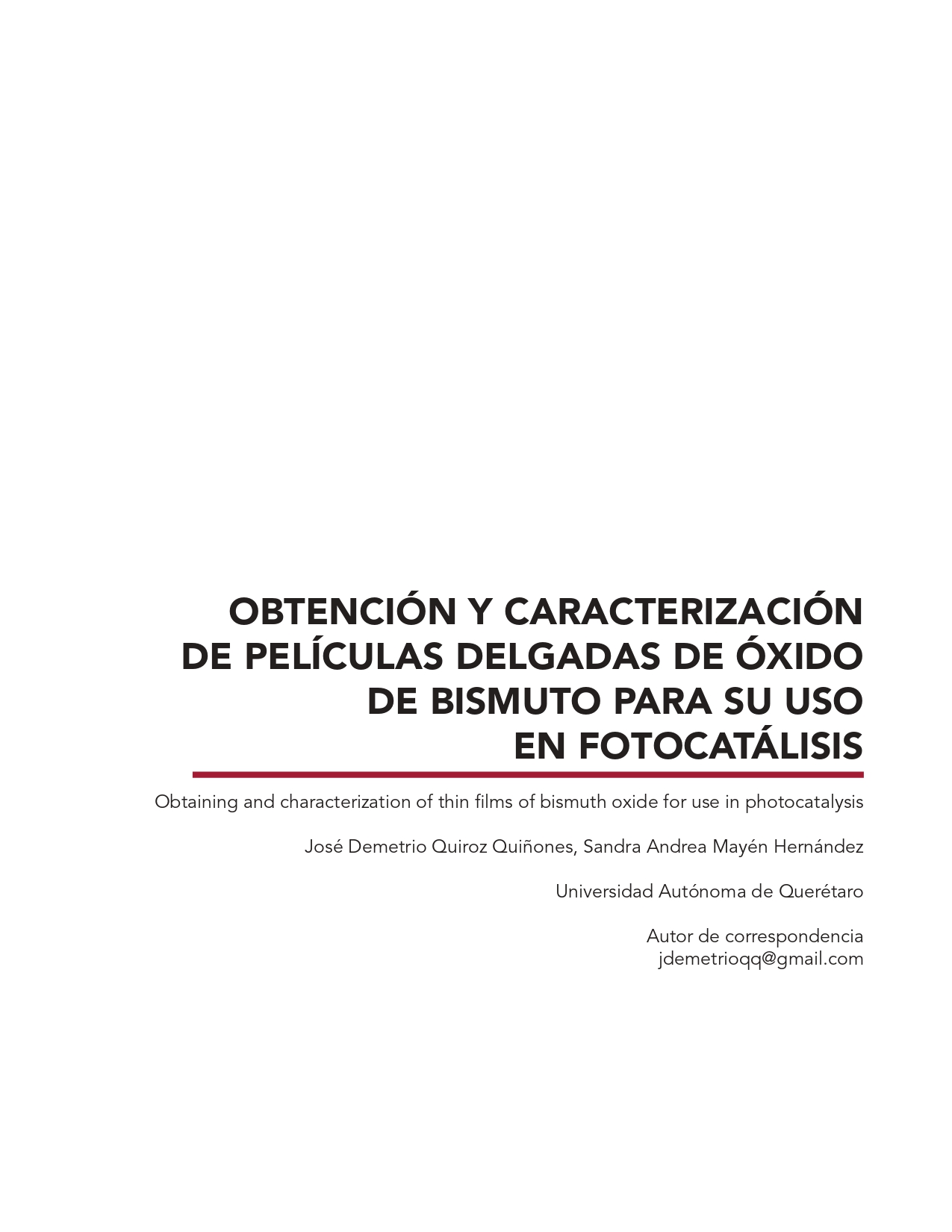Abstract
In the present work, thin films of Bi2O3were obtained by sol-gel and dip-coating techniques. These films, according to the literature, are reported to have band gap values (Eg) that manage to take advantage more efficiently of the energy of the visible spectrum (400-800 nm). During the synthesis of Bi2O3 two surfactants, Triton and Tween were worked. Once the Bi2O3 solution was obtained and the substrates were coated (glass slide), the thermal treatment was carried out. To establish the influence of the sintering temperature on the crystallinity of the material, temperatures of 350, 400, 450, 500 and 550 °C were tested. The films were characterized by UV-Vis and Raman spectroscopy and X-ray diffraction. The methylene blue degradation experiments in aqueous solution using a UV lamp as irradiation source, showed that the Triton films sintered at 550 °C were the ones that degraded a greater percentage of the initial concentration of the dye, precisely 60%.
This work is licensed under a Creative Commons Attribution-NonCommercial 4.0 International License.

